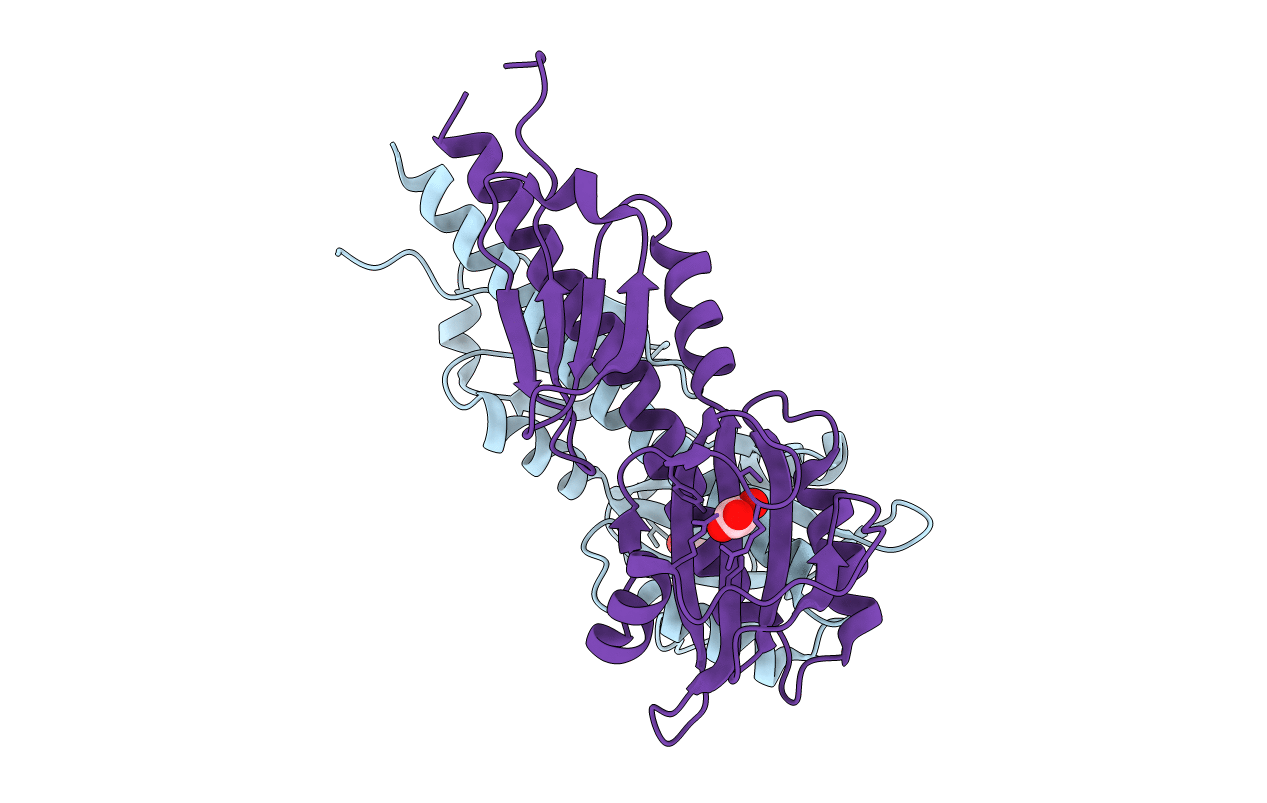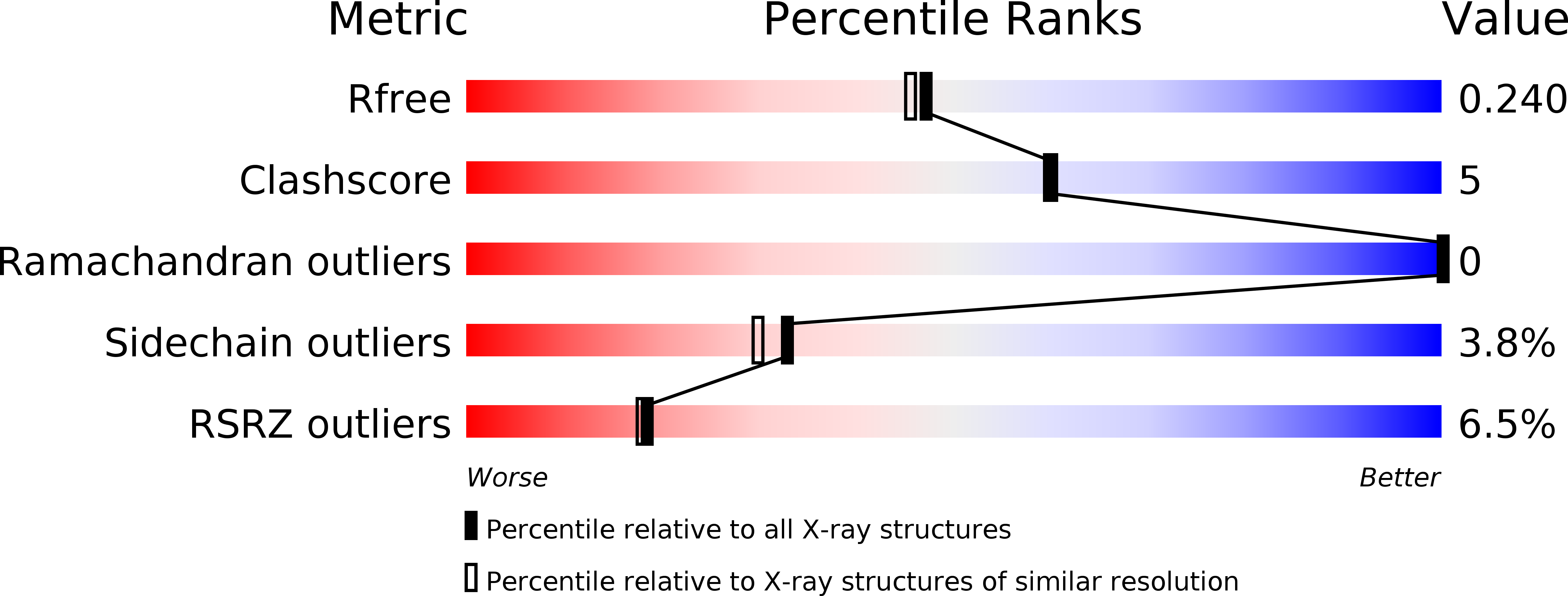
Deposition Date
2013-03-01
Release Date
2013-05-15
Last Version Date
2024-11-20
Entry Detail
PDB ID:
4JGP
Keywords:
Title:
The crystal structure of sporulation kinase D sensor domain from Bacillus subtilis subsp in complex with pyruvate at 2.0A resolution
Biological Source:
Source Organism:
Bacillus subtilis subsp. subtilis (Taxon ID: 224308)
Host Organism:
Method Details:
Experimental Method:
Resolution:
2.03 Å
R-Value Free:
0.21
R-Value Work:
0.17
R-Value Observed:
0.18
Space Group:
P 21 21 21


